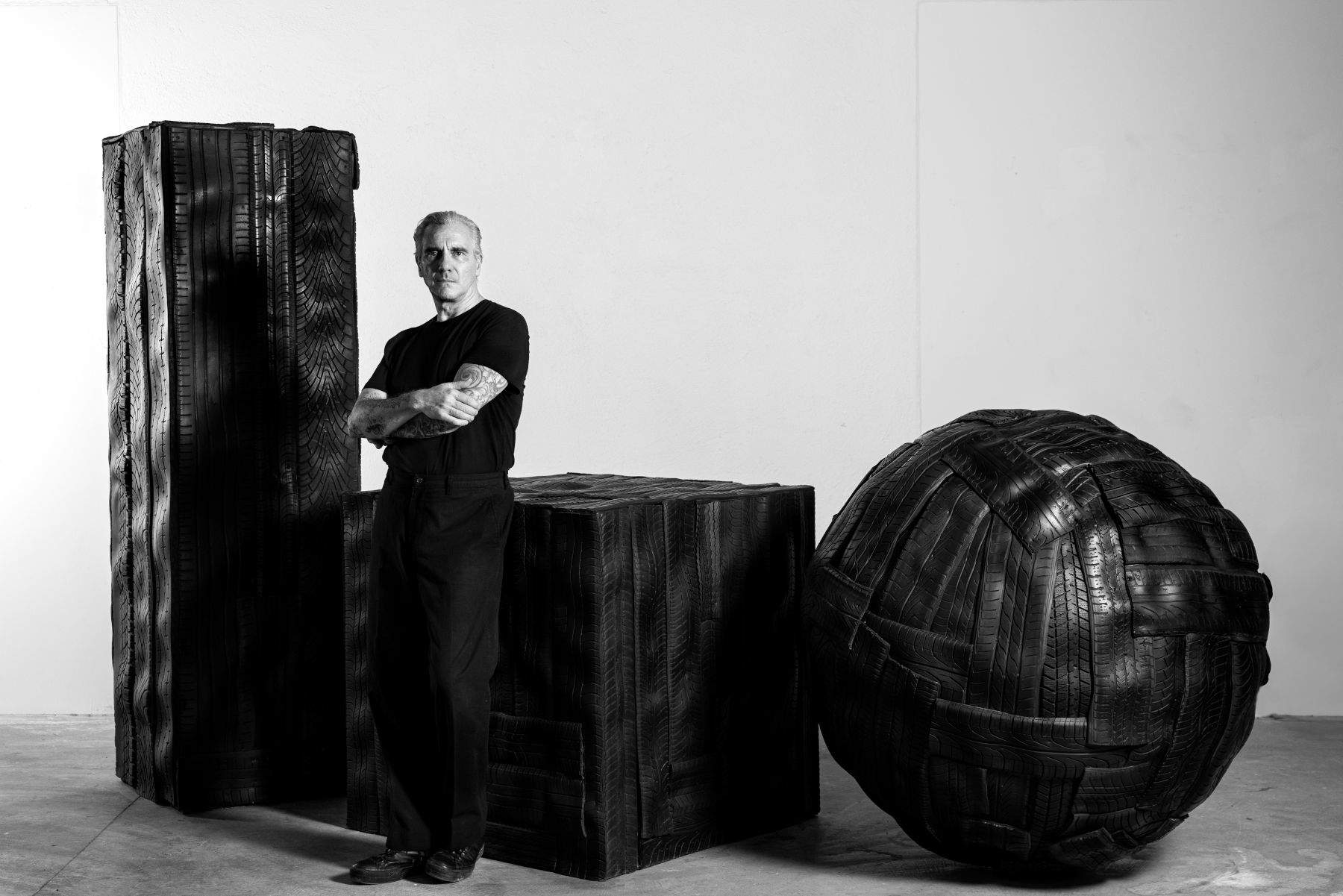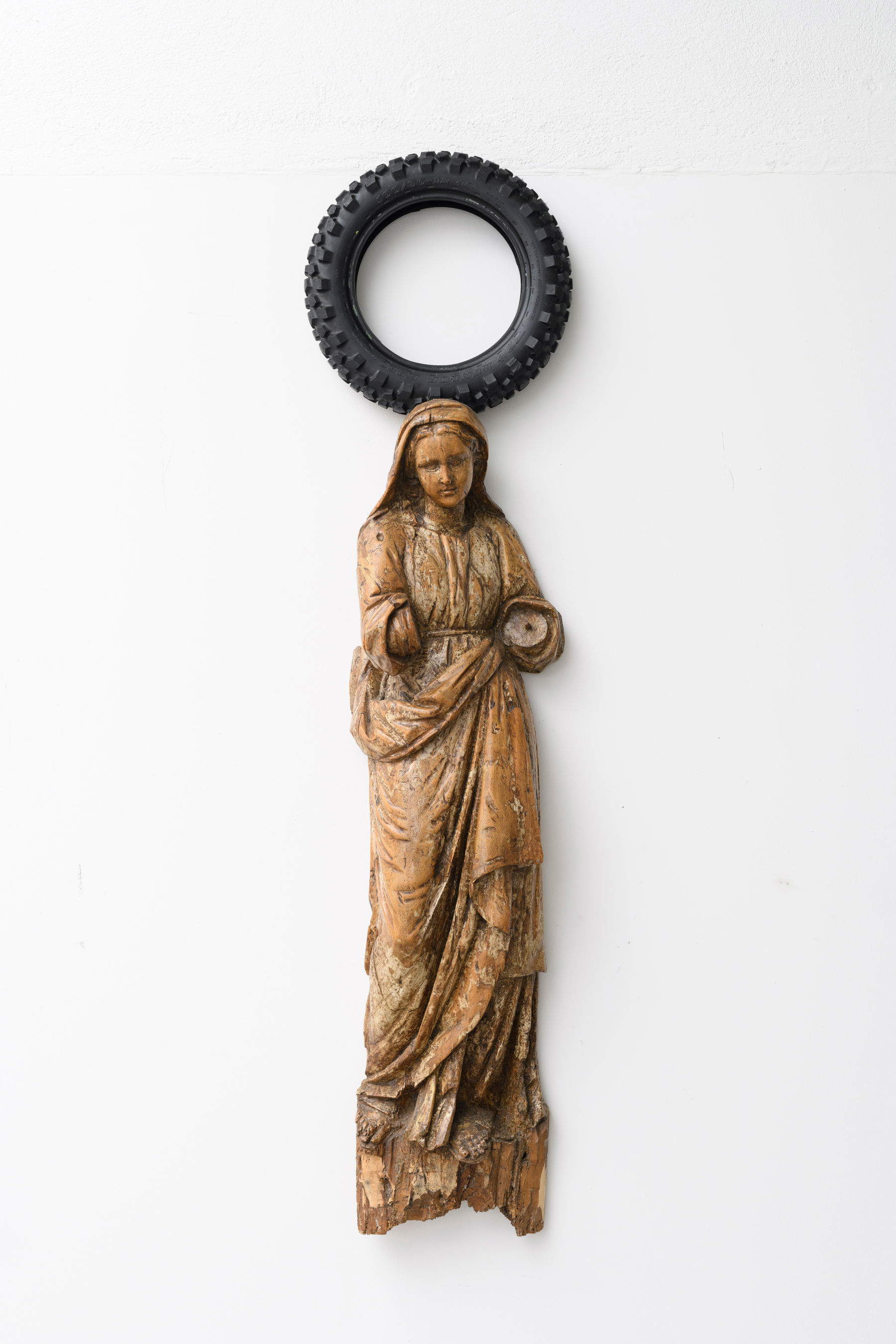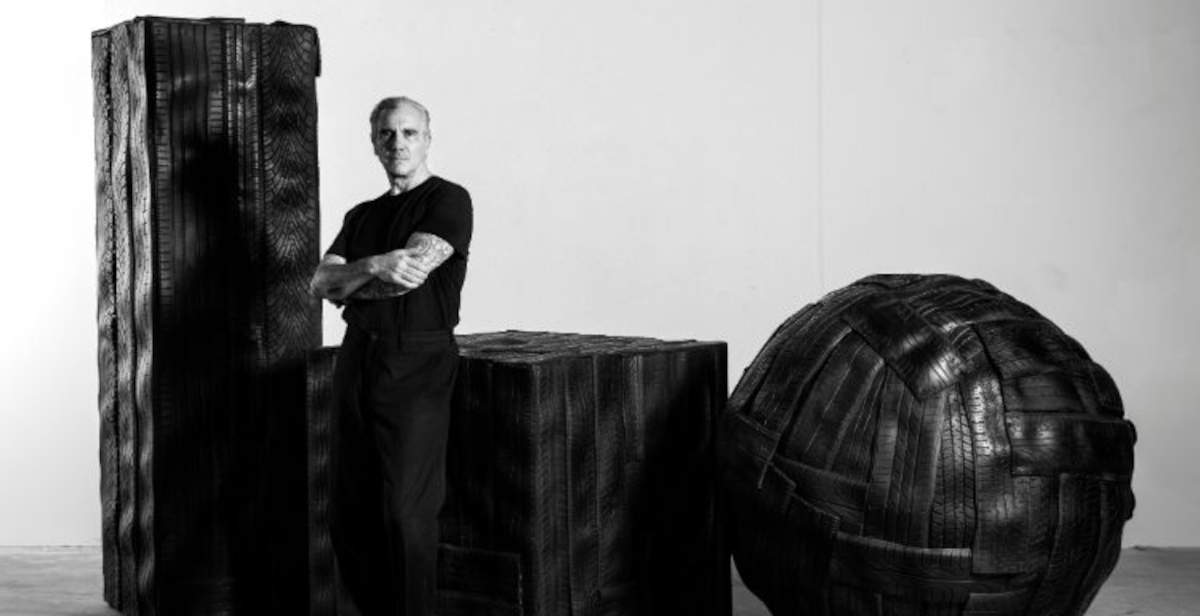From November 15, 2025 to February 15, 2026, the Pinacoteca Comunale di Città di Castello (Perugia) will host God Year, a new solo exhibition by Paolo Canevari, curated by art historian and critic Lorenzo Fiorucci. Promoted by the Municipality of Città di Castello, the exhibition is part of the museum’s path of enhancement as a place of confrontation between historical memory and contemporary languages, a dialogue that becomes particularly important within the Renaissance spaces of Palazzo Vitelli alla Cannoniera. The venue, one of the symbols of the city of Todi, holds masterpieces of the Italian Renaissance, from Luca Signorelli to Raphael Sanzio, from Lorenzo Ghiberti to Luca della Robbia. In this context, Canevari’s intervention generates a visual and conceptual short-circuit, building a direct relationship between the material of the present and the layered memory of the past. His sculptures, installations and performances confront the museum’s historical works, creating a path that invites the public to question the tensions and contradictions of our time.
The title God Year already encapsulates the key to the exhibition. The expression picks up on a famous industrial brand, that of a well-known tire company, and at the same time evokes the concept of Jubilee, recalling a reflection on the relationship between faith, sacredness and consumption. In Umbria, a land that gave birth to figures such as St. Benedict and St. Francis, the Jubilee theme acquires an amplified symbolic value, placing in dialogue the spirituality rooted in the territory with the social and material critique that runs through Canevari’s poetics. Indeed, the Roman artist has always moved on the border between sacred and profane, matter and spirit, constructing works that challenge established meanings and the very function of the object. In the works presented at the Pinacoteca, materials lose their original connotation to take on new symbolic values, becoming tools for reflection on the way contemporary society elaborates the concept of spirituality and the relationship with its cultural heritage.
“Canevari has for years chosen the tire and inner tube as his material of choice, materials that in his works evoke complex symbologies and narratives, capable of challenging any superficial reading,” says curator Lorenzo Fiorucci. “The tire is both a symbol of technological progress and capitalist development, but also waste, polluting refuse, an emblem of oil and global exploitation. Its transformation into sculpture and installation thus becomes an act of reflection on our way of living and producing meaning.”


Each room in Palazzo Vitelli is transformed into a place of visual meditation, where Renaissance and contemporary works observe each other, giving visitors a renewed perception of the museum. Canevari’s intervention traverses the space, constructing a narrative that interweaves time and matter, permanence and transformation. The exhibition also takes on a formative and experimental significance. Alongside Canevari and curator Lorenzo Fiorucci, a group of young art historians, Livia Castellani, Niccolò Falaschi, Chiara Maccarelli,Giulio Verna and Eleonora Reali, actively participated in the project, elaborating critical readings and interpretations of the works in relation to the exhibition context. The museum is thus transformed into a laboratory of ideas, where academic training meets curatorial practice, in a direct dialogue with the artist.
During the exhibition period, public meetings and moments of confrontation between Canevari and young scholars are planned, confirming the desire to make the exhibition not only an exhibition event, but also an experience of research and in-depth study. The focus on education, collaboration and knowledge sharing fits fully into the vision of the museum as an open and dynamic space in which the public can participate in an ever-evolving process of knowledge. The exhibition curated by Fiorucci takes the form of a path of awareness, where the conceptual strength and physicality of the materials used by Canevari are measured against the spiritual and symbolic dimension that runs through the history of the museum. God Year thus becomes an inquiry into the very essence of artistic creation: a confrontation between past and present, between the permanence of the image and its continuous reinterpretation. Through this project, the Città di Castello Art Gallery confirms itself as a place capable of hosting and generating new perspectives on art, keeping alive the relationship between tradition and contemporaneity.
 |
| Paolo Canevari brings his "God Year" to Città di Castello Art Gallery |
Warning: the translation into English of the original Italian article was created using automatic tools. We undertake to review all articles, but we do not guarantee the total absence of inaccuracies in the translation due to the program. You can find the original by clicking on the ITA button. If you find any mistake,please contact us.